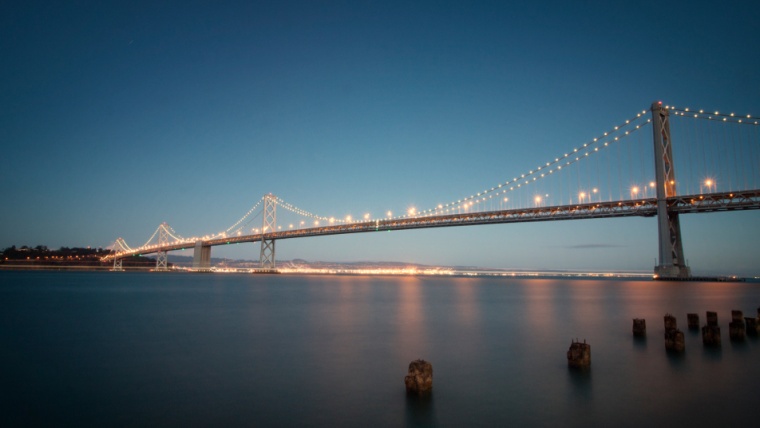
One of the main advantages of DLSR cameras over compact cameras is the ability to exchange lenses. No matter how wide the range of a zoom lens incorporated in a compact camera, the versatility that comes at hand with the possibility of choosing the lens of your preference is hard to match.
That said, apart from the obvious downside of having to carry bulky bags, lenses tend to be expensive, even more expensive than cameras. And there is no way around here. Since the price of the lens is in direct relation to the quality of the optics inside and the manufacturing process, if you want to achieve the best possible result, you will have to make important investments in your lenses.
However, from time to time, manufacturers manage to pull out incredible quality with relatively low retail prices, and that is what Canon achieved with the 10-18 mm. This wide angle lens has not-so-great aperture (probably the weakest point of all) at 4.5 – 5.6 but being fair, a wider aperture is one of the most difficult features to achieve and, given the overall quality and at a retail price of about $300 (compare this with $650 for its predecessor, the 10-22 mm), I feel there is not much to complain about.
Table of Contents
I am showing how outdated my lenses are here, but one of the improvements from some of my other lenses that I truly love in the 10-18 mm is the focus. First of all, by moving the focusing ring backwards, it is now much easier to get sharply focused images under specific conditions such as when using ND filters. If you ever tried to take a photo using a ND1000 filter and a lens with the focusing ring attached to the filter thread, you know what I mean. Dark ND filters do not let enough light in as to do the manual focusing with the filter on, meaning that one has to first focus and then attach the filter trying not to rotate the focusing ring in the process. By simply moving the focusing ring a few centimeters back, life became much easier than before!
In terms of auto-focus, the lens has the STM system. STM stands for stepping motor, which are a type of electronic motors capable of moving very small steps in a controlled fashion and they are very quiet. In general, if you have already used STM or USM lenses before, you might not be that surprised, but if your previous experience is with the old standard auto-focus for budget lenses such as the 18-55 mm kit lens (old version), you will be amazed. Also, even though it is not supposed to be as fast as the USM system, for normal purposes such as travel or landscape photography, the auto-focusing is pretty fast.
But of course, if you are thinking about buying a wide angle lens, your main concern is probably the focal length. First of all, keep in mind that this is a lens that was designed for so-called APS-C sensors. The difference between full frame and crop sensors is beyond the scope of this review, but in general, a focal length of 10 mm on a crop sensor will be equivalent to a focal length of 10 x 1.6 = 16 mm in a full frame sensor, or in a 35 mm film. And, more importantly, do not try to attach a lens designed for a crop sensor to a full frame camera, or you will damage your sensor!
The following image shows the difference between the two extremes of the focal length (18 mm on the left and 10 mm on the right). The wide-angle provided by the 10 mm is great to capture indoor architecture shots. Notice, however, the distortion at the borders of the image, especially on the bottom left corner, where the white round table looks like an oval. This needs to be taken into account during post-processing.
That said, the focal length range is a great complement to the kit lens, especially if your interest lies in travel, architecture, landscape or something more specific such as climbing photography, or any type of photography where you want to capture a subject and still be able to get a good portion of background on your frame.
Something inevitable when dealing with wide angle lenses is the optical distortion. This is a consequence of how light rays are guided through the lens towards the camera sensor/film and, even though a careful manufacture can help in that sense, completely getting rid of it is an impossible task.
The 10-18 mm lens does a pretty decent job in this sense as well. Also, thanks to the many options for post-processing readily available nowadays, getting rid of the remaining distortion is an easy task. Still, the fact that some distortion will be present is something that you should keep in mind when taking photos with any wide angle lens so that you can plan your composition so that when you post-process your images no important information is lost.
Apart from some useful features such as having the focusing ring detached from the filter thread, the lens feels quite robust. Being part of the cheapest line of Canon lenses, the 10-18 mm is mainly constructed of plastic which can make it less resistant in the long term, but at the same time, it allowed Canon to build a very lightweight lens that makes it really easy to carry around.
In general, I would say that, even though the 10-22 mm is a faster lens than the 10-18 mm, for those amateur photographers that are either on a budget or just starting out and willing to try out different focal lengths without having to get a hole in the bank account, the 10-18 mm is definitely a great choice as a second lens.
Comments (0)
There are no comments yet.